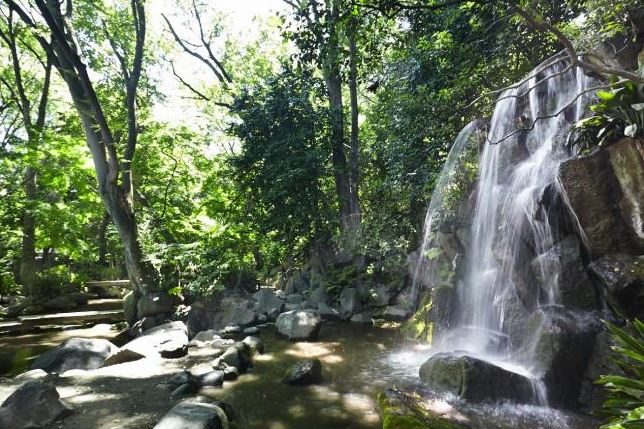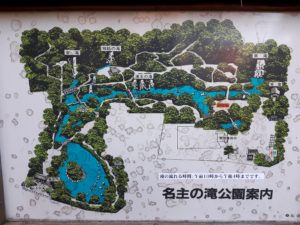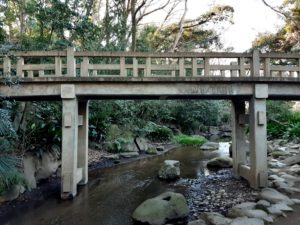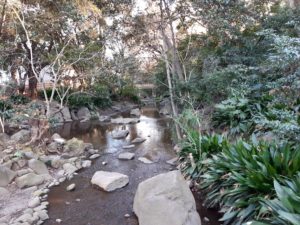<Nanushi no Taki Garden>
- The main pond of the garden
- Map of the garden
- One of the several bridges
- The stream in the garden
It was opened in the middle of the 19th century as a private residence by the lord of
The Oji area, at the tip of the Musashino Plateau, is home to many waterfalls, and there used to be seven waterfalls known as the “Oji Nanadaki”. Of these, Nanushi-no-Taki is the only one that still exists. The falls consist of four waterfalls.
The park is a strolling garden where these waterfalls, zelkova trees, enoki trees, chinquapin trees and more than 100 yama-momiji (Japanese maple tree) trees are planted on a slope to create a natural landscape.
It is located in Kita ward,

Kiyosumi Garden
This is a “strolling-style garden in the forest setting” with fountains, artificial hills and dry landscape. This method was used for the Daimyo Garden in the Edo period and was also adopted by the Meiji period, and is said to have been modernized by this Kiyosumi Garden.
Part of this area is said to have been the residence of Bunzaemon Kinokuniya, a wealthy merchant of the Edo period. During the Kyoho era (1716-1736), the residence was used as a subordinate residence of Kuze Yamato Mamoru, the lord of Sekijuku in Shimousa province, and the garden seems to have been formed to some extent at that time.
In 1881, Yataro Iwasaki, founder of Mitsubishi Zaibatsu (the largest conglomerate in Japan), bought the estate, which had fallen into disrepair, and planned to develop a garden for the comfort of employees and for inviting distinguished guests. Even after Yataro’s death, landscaping work continued, and the garden and its pond were constructed using water drawn from the Sumida River and surrounded by stones from all over Japan, making it a “strolling garden” representative of the Meiji era.
The Kiyosumi Garden was severely damaged in the Great Kanto Earthquake, but it served unintentionally as an evacuation center and saved many lives. The Iwasaki family valued the disaster prevention function of the garden, and in 1924, donated the eastern half of the garden, which was less damaged, to the city of Tokyo for use as a park, and the city reopened it to the public in July 1932.
In 1977, an additional site adjacent to the west side of the garden was opened to the public as an open park. There is a lawn area and a pergola here. About 20 cherry trees have been planted here, making it a popular place for cherry blossom viewing in the spring. The garden was designated as a place of scenic beauty by the Tokyo Metropolitan Government on March 31, 1979.







0件のコメント